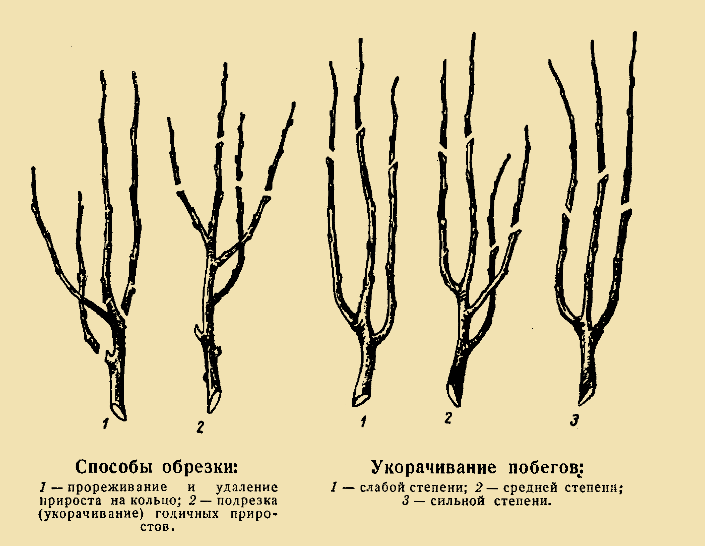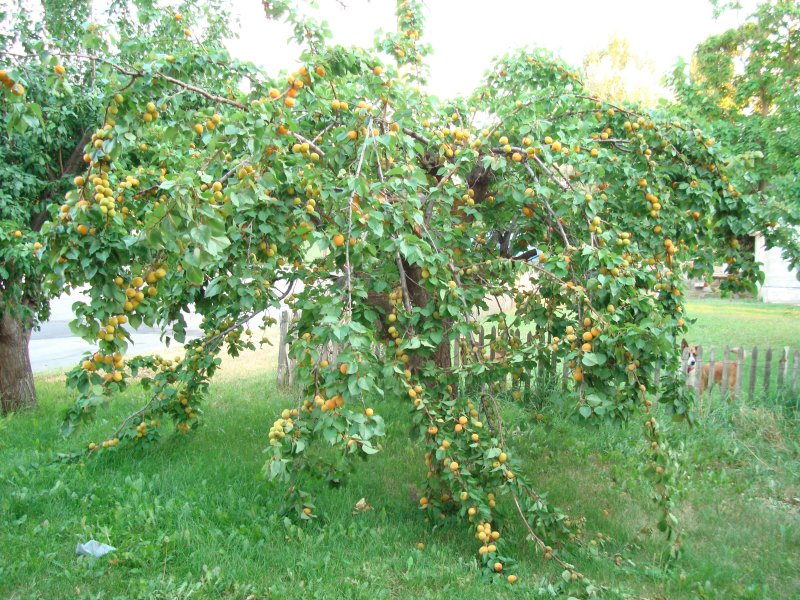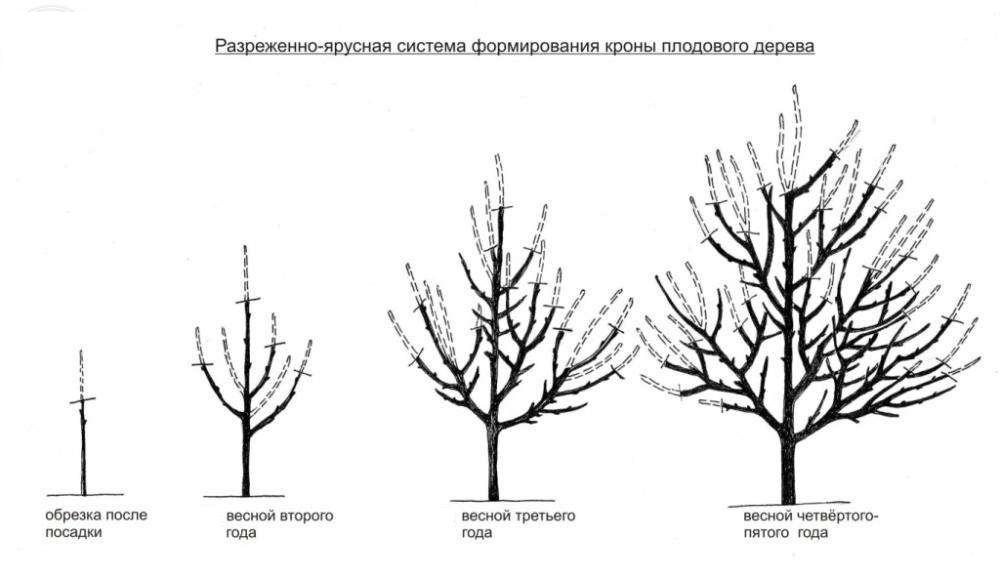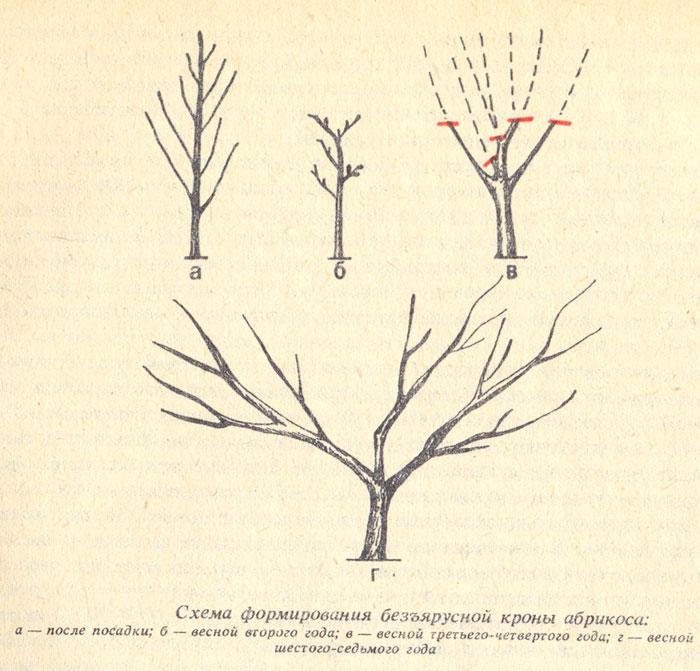Scheme of correct pruning of apricot in winter
Benefits of winter pruning
Apricot fruits are in one of the first places among other fruit trees for their medicinal properties and nutritional value. Although such a plant is large in size, it requires a rather impressive piece of land in your garden and attention, but it is worth it. In order for the apricot to pleasantly surprise its owner in the spring with beautiful delicate white flowers and a pleasant smell, and in the summer season - with many sweet juicy fruits on the branches, it should be properly looked after. One of the important points in this matter is the winter pruning of apricots. Since this procedure is a serious operation, somewhat painful for the fruit tree, you need to decide on the choice of the season.
In winter, experienced gardeners advise pruning branches and forming a crown because the plants are still dormant during this period, which can make apricot pruning more gentle. A tree cut on time and correctly will be able to grow and develop normally.
It is important to know that pruning is best done on the day when the temperature on the thermometer does not drop below minus 8.
Indeed, if pruning is carried out at too low a temperature, then the plant will be too fragile, and the wounds obtained after cutting off the branches will heal for too long.
Since the crown of a light-loving fruit tree is quite well branched, has flexible and thick branches, when pruning it, gardeners set themselves the following tasks - to promote the annual formation of new viable shoots and maintain a healthy culture.  What are the clear advantages of pruning apricots during the cold season? Since there are no leaves on the tree in winter, you can normally consider the state of the crown of the plant. This will make it possible to determine exactly how to prune the branches.
What are the clear advantages of pruning apricots during the cold season? Since there are no leaves on the tree in winter, you can normally consider the state of the crown of the plant. This will make it possible to determine exactly how to prune the branches.
The procedure, carried out in winter, reduces the stress state that the culture has at any other time of the year. With the onset of cold weather, wood freezes, so it is much easier to cut it, in winter there will be no unwanted seizures when using a hacksaw or pruner. It is in the winter season that it is possible to arrange the stairs as conveniently as possible, without worrying about accidentally damaging other trees located in the immediate vicinity of the apricot on your garden plot.
If you do not form a crown for young trees, they will not bear fruit normally, and will also have low immunity to various kinds of diseases, you can observe the drying out of the branches, as well as the depletion of the plant by too early abundant harvests. If you carry out pruning, following all generally accepted norms, correctly form the crown, then you can be sure that your garden tree will grow viable, healthy, and will bear fruit for a long time and with high quality.  Although apricot has the property of giving an annual growth, it still cannot form the required number of lateral branches, therefore, it is possible to achieve their increase only with the help of timely pruning.
Although apricot has the property of giving an annual growth, it still cannot form the required number of lateral branches, therefore, it is possible to achieve their increase only with the help of timely pruning.
Crown formation scheme
As mentioned above, the crown of the apricot is quite branched, and young trees have the ability to quickly increase its volume and form summer shoots. Therefore, after a certain amount of time, the shape of the crown of the fruit tree from the reverse pyramidal shape becomes wide pyramidal. The apricot tree cannot independently control the number of fruits on the branches, which grow too much, already having branches at a young age that reach a length of about one meter. They move away from the tree and form sharp corners, and such a crown is not strong enough. Most of the emerging ovaries produce fruits, thus a serious problem arises - an overload in fruiting. The main purpose of winter pruning is the possibility of the appearance of new strong shoots every year. For most of the zones where the industrial cultivation of apricots takes place, a sparse-tiered type of crown can be called characteristic. There are also schemes for the formation of a tree crown like a bowl or single crowns - the so-called tiered types.
They move away from the tree and form sharp corners, and such a crown is not strong enough. Most of the emerging ovaries produce fruits, thus a serious problem arises - an overload in fruiting. The main purpose of winter pruning is the possibility of the appearance of new strong shoots every year. For most of the zones where the industrial cultivation of apricots takes place, a sparse-tiered type of crown can be called characteristic. There are also schemes for the formation of a tree crown like a bowl or single crowns - the so-called tiered types.
It is customary to carry out restorative pruning of a tree if it is frozen over during an overly harsh winter. In this case, only the affected branches are removed, and new ones are formed from the young ones. As the fruit tree grows and the annual growth decreases, it is necessary to carry out anti-aging pruning by transferring the main skeletal branches. Of the young shoots, it is necessary to leave only the most viable ones, having a normal arrangement, in order to subsequently be able to transfer them to fruiting, and remove the rest.
In ordinary garden plots, it is customary to use a flattened type of crown formation when pruning. This is due to the fact that suburban areas are of limited size. Three to four main branches of the tree must be laid so that the distance between them is not less than 40 cm, as well as singly, which will significantly affect the strength of the plant base and can positively affect the illumination of the crown. That is why, when forming a sparse-tiered type of crown, at a close distance of about 20 cm, it is permissible to place several branches at most.
The last step in creating a crown of a tree from branches that are at an angle of about 50 degrees is the transfer of the main conductor to a branch, which will already be somewhat weaker. If possible, in the process of planting a skroned additive, two branches that grow in the opposite direction should be directed along the row. In the first year of life of apricot, branches are recommended to be cut shortly on the sides by about half of the entire length, and the central conductor - 70 cm from their base. Between the end of the side branches and the upper cut of the main one, it is customary to leave a distance of about 30 cm, and the branches at an angle of 90 degrees are cut "on a ring". According to the parameters of the divergence of the main branches of the fruit tree, the angle in the upper part of the crown should not be less than 55 cm, and in the lower part - less than 45 cm.With the timely reduction of the main branches and the main plant conductor in the second and third years, the rules of subordination should be adhered to. This means that in varieties with a rather weak branching - such as Pineapple, Orange-red, Superior - the pruning level should be gradually increased, and if apricot varieties have medium or strong division (Red-cheeked, Ruby, Golden Summer) this process advise to weaken.
Between the end of the side branches and the upper cut of the main one, it is customary to leave a distance of about 30 cm, and the branches at an angle of 90 degrees are cut "on a ring". According to the parameters of the divergence of the main branches of the fruit tree, the angle in the upper part of the crown should not be less than 55 cm, and in the lower part - less than 45 cm.With the timely reduction of the main branches and the main plant conductor in the second and third years, the rules of subordination should be adhered to. This means that in varieties with a rather weak branching - such as Pineapple, Orange-red, Superior - the pruning level should be gradually increased, and if apricot varieties have medium or strong division (Red-cheeked, Ruby, Golden Summer) this process advise to weaken.
Apricot Pruning Video
The post shows how to properly prune an apricot and how to correct the mistakes of the previous pruning.


